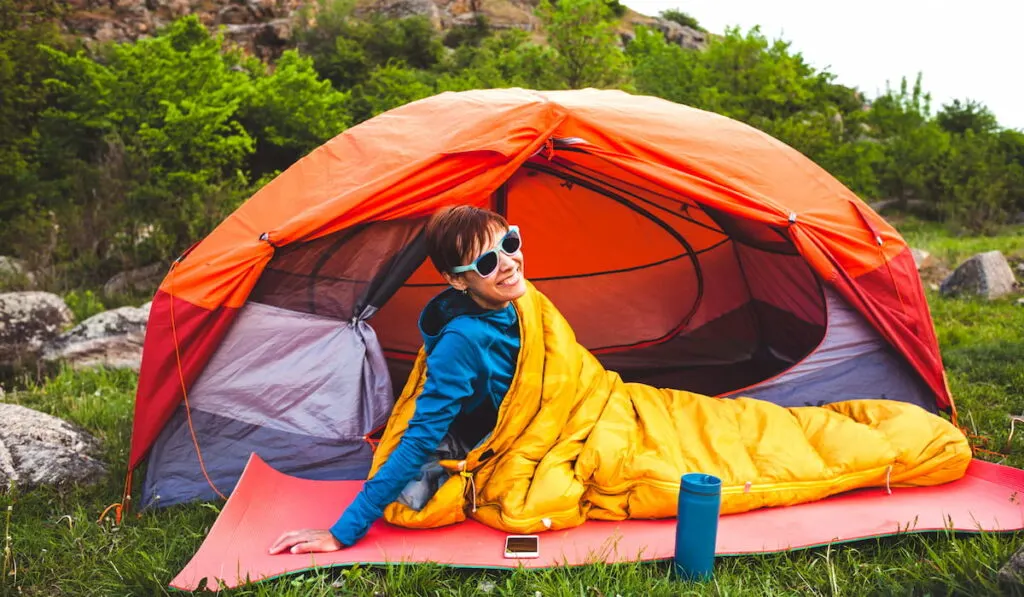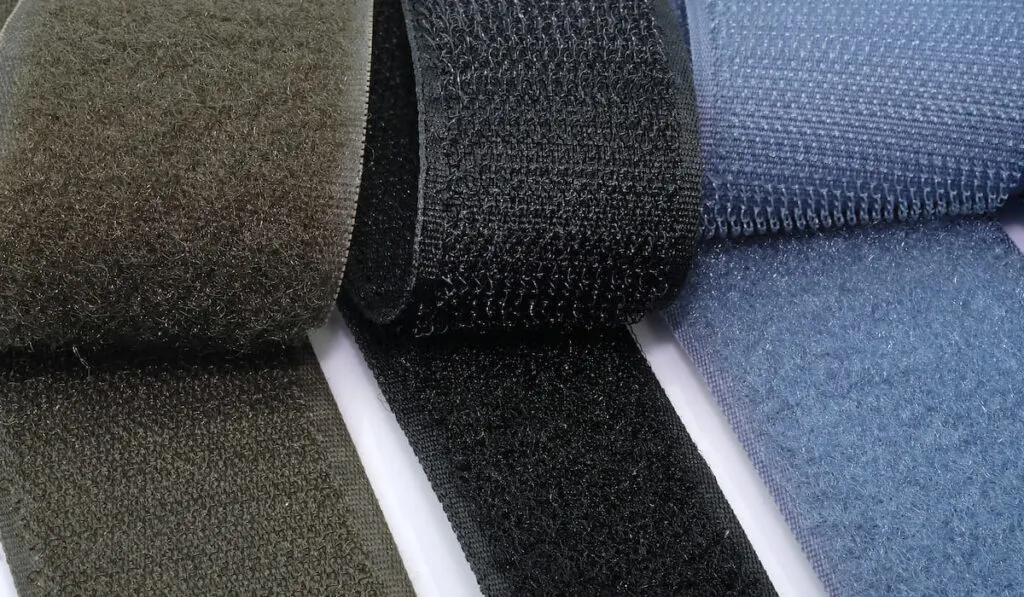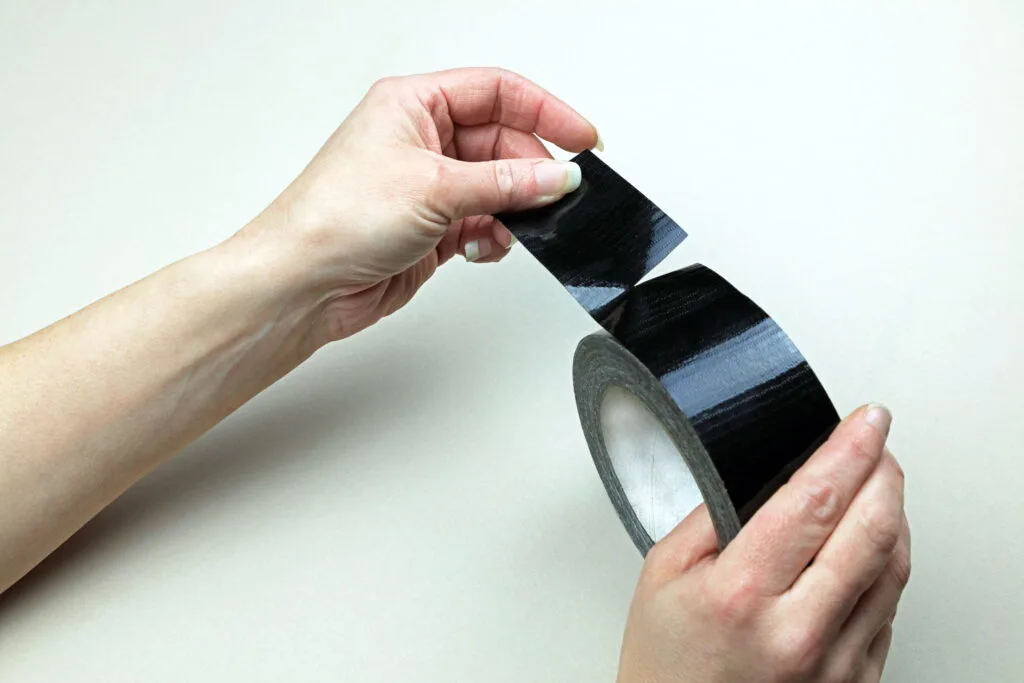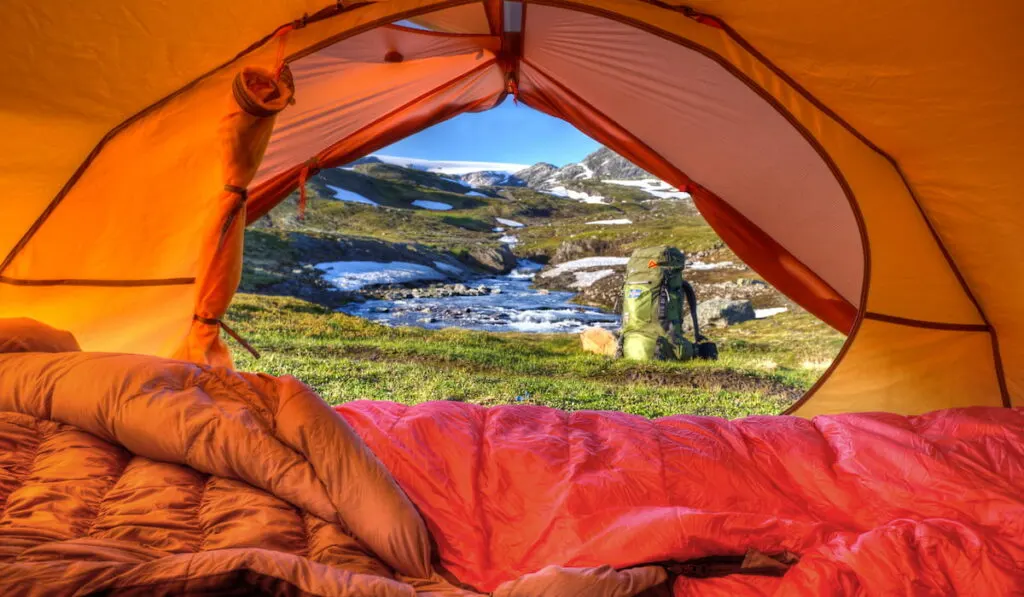When you’re going on a camp, you want to make sure that you pack all the gear that you need, including a sleeping pad to keep you comfortable at night, especially during winter.
However, the problem with getting a sleeping pad is you often slip off it, which defeats the purpose of bringing it in the first place. This happens because both the sleeping bag and pad are made of synthetic materials and rubbing them against each other causes the other material to slide.
So, we’ll show you some ways to help keep your sleeping bag on its pad.

Table of Contents
How to Keep a Sleeping Bag on a Pad
1. Use Velcro
For the first option, you will need Velcro — plenty of it.
For those who don’t know what Velcro is, it is a tape that consists of two strips of plastic sheets; one side has tiny loops, while the other contains thin, flexible hooks. These two strips easily stick together, and they can also be separated effortlessly by pulling them apart.
You can purchase Velcro at your local store, and it is also available online.
To use Velcro, first clean the sleeping bag and pad. The presence of debris and dust can cause the Velcro to not stick to them.

Then, simply attach strips of Velcro to the sleeping pad and the sleeping bag. Be mindful of how you attach the Velcro strips — they should stick to each other when pressed together.
The only problem with this option is that you may unconsciously pull the Velcro apart while you’re sleeping, especially if you move around a lot. But if you don’t move too much, then this shouldn’t be a problem.
You can keep the Velcro on the pad and the sleeping bag indefinitely.
2. Put the Sleeping Pad Inside the Bag
Perhaps this is the easiest way to keep a sleeping bag on a pad without using any materials.
If you think that the sleeping pad will fit inside the sleeping bag, then you can place the pad inside the bag to make sure that it will stay under you.
However, make sure that you’re comfortable enough to bring the pad inside. Otherwise, it will defeat the purpose of getting a comfortable night’s sleep if the space is too tight.
3. Apply a Grip Tape
Grip tape can be used the same way you would use Velcro. However, the method of installing it is different.
To begin, clean your sleeping pad and sleeping bag.
Then, cut strips of grip tape and put them on the shoulder, hip, and torso areas of the pad and the bag. This will create a rough surface that will prevent your bag from sliding off the pad.
4. Use a Pillow, a Jacket, or a Bag
If the problem is that you’re sliding off the sleeping bag because of the uneven ground, then you can use your gear to stop you from falling off.
Creating a barrier between you and the floor will prevent you from sliding off the pad.
To do this, simply take pillows, jackets, bags or whatever is available, and then put them around the sleeping bag. The idea here is to create a wall so that your body and the bag will not completely slide off.
Pair this with other methods, and you’ll surely have a comfortable sleep without sliding off the sleeping bag, even when you’re on uneven terrain.
5. Use a Nonslip Mat
As mentioned earlier, the sleeping bag and sleeping pad are typically made of synthetic materials, such as nylon, which are not resistant to slipping. Therefore, creating a textured barrier between the two materials will help you stay on the pad.
So, for campers, you can purchase a nonslip mat or even a yoga mat before going on your trip. To use, simply put the nonslip mat between the pad and the bag.
This option is great for campers who do not need to walk for miles to reach their destination. Keep in mind that for hikers and backpackers, bringing unnecessary materials could be a burden.
6. Place a Mat on the Floor
If putting the nonslip mat between the sleeping bag and the sleeping pad is not enough, then you can place the mat directly on the floor.
This is because the pad also tends to slide on the floor of the tent, and providing a rough texture helps prevent the pad from sliding off.
7. Use a Silicone Sealant

Another method is using a silicone sealant to create dotted patterns on the hip and back areas of the pad and the bag. Leave the silicone for about one day or until dry so that it works perfectly.
This method is less visible compared to the previous options mentioned above.
If you think that the grip is not enough, then you can simply apply more silicone sealant in other areas of the bag and the pad.
8. Use Duct tape

If you happen to be already at the camping site and did not bring any materials that will help you keep the pad and the bag together, then using duct tape is a decent solution.
Duct tape is essential for campers, backpackers, and hikers. So, if you don’t have any, you can simply borrow from other campers or hikers.
To use, simply tape the sleeping bag onto the sleeping pad. While this is not a long-term solution, spending the night without a slippery bag or pad will surely give you a comfortable sleep.
9. Choose a Wider Sleeping Pad
An effortless way to keep your sleeping bag from sliding off is to invest in a wider sleeping pad. Indeed, buying a narrow sleeping pad will cause you to slide off even from just moving a bit.
On the other hand, buying a sleeping pad that is twice as wide as your sleeping bag will ensure that you won’t slide off even when you move or crawl in your sleep.
However, this method is not for everyone. If you’re a hiker or a backpacker, choosing lightweight materials should be the top priority. That said, you may opt to choose a solution that will not be too heavy for you to bring, such as Velcro and grip tape.
10. Make a Hook Attachment
If the above options do not work, you can also manually attach hooks to the side of the pad and the bag. This will allow you to keep the two items together.
11. Deflate the Sleeping Pad

This tip applies if your pad is inflatable.
If your sleeping pad is overinflated, you’ll have a higher risk of sliding off your sleeping bag. So, make sure that your sleeping pad is not too inflated, but don’t deflate it too much, as that may cause you to have a cold, uncomfortable sleep.
Bonus Tip: Sleep in Warm Layers Instead
The main purpose of having a sleeping pad is to keep you warm and comfortable while sleeping.
However, if you are not able to stay warm and comfortable even after trying the options mentioned above, or if you don’t have the materials to follow them, then it might be best to wear your clothes instead to keep you warm.
This method works when you camp during warm weather and the tent floor is not too cold.
Simply cover yourself first with base clothing, such as long thermal underwear. From that, add more layers of clothing until you feel warm enough.
Don’t forget to wear thick layers of socks and gloves to cover your hands and feet. These parts of your body tend to get cold first, so it is vital to keep them warm for a good night’s rest.
Do You Need a Sleeping Pad?
Before buying or using a sleeping pad, it is important to ask yourself: “Do I really need a sleeping pad?”
If you are going on a camping trip in the hottest months of the year, and you get yourself a nice, comfortable spot for your tent, then you might not need a sleeping pad.
After all, sleeping pads are made to give you a comfortable and warm sleep, especially during chilly winter nights.
Conclusion
There are many reasons why sleeping bags slip, such as when the sleeping pad is too inflated, when you are located on uneven terrain, or when your sleeping pad is too narrow. That means that the problem starts even before you purchase a sleeping pad.
Therefore, it is important to take note of the things mentioned above, especially if you haven’t purchased a sleeping pad yet, as they will help you on your next journey.
You can also combine and experiment with the options we mentioned and see which of them works best for you. Keep in mind that keeping yourself from sleeping on cold ground is essential to prevent hypothermia.
